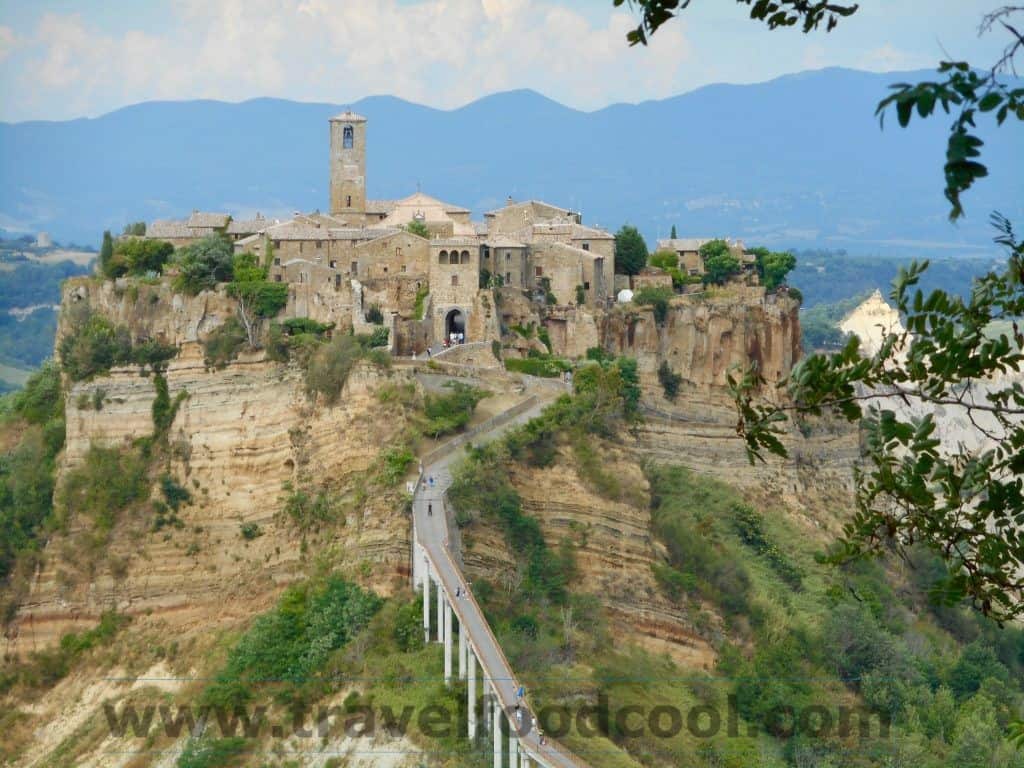
I don’t know who first called Civita di Bagnoregio “The Dying City“, but that name certainly grabs your attention. I know that when I first heard about it, I certainly took notice. For about one year I’ve been sending notes to Pete saying “Hey, check this out, we have to go here”.
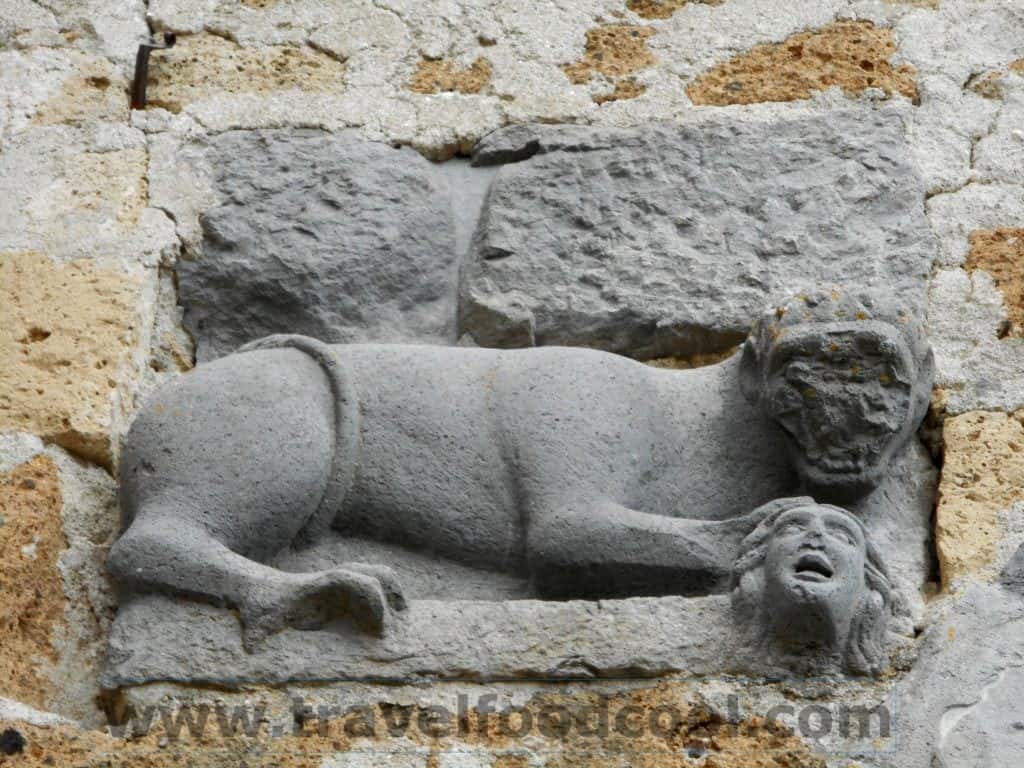
We finally managed to go and see the town and I am so glad that my persistence paid off. For a name that sounds so grim and gloomy, the town is anything but! If you are a photographer, or just like to take pictures, this town is a must see; it is so picturesque.
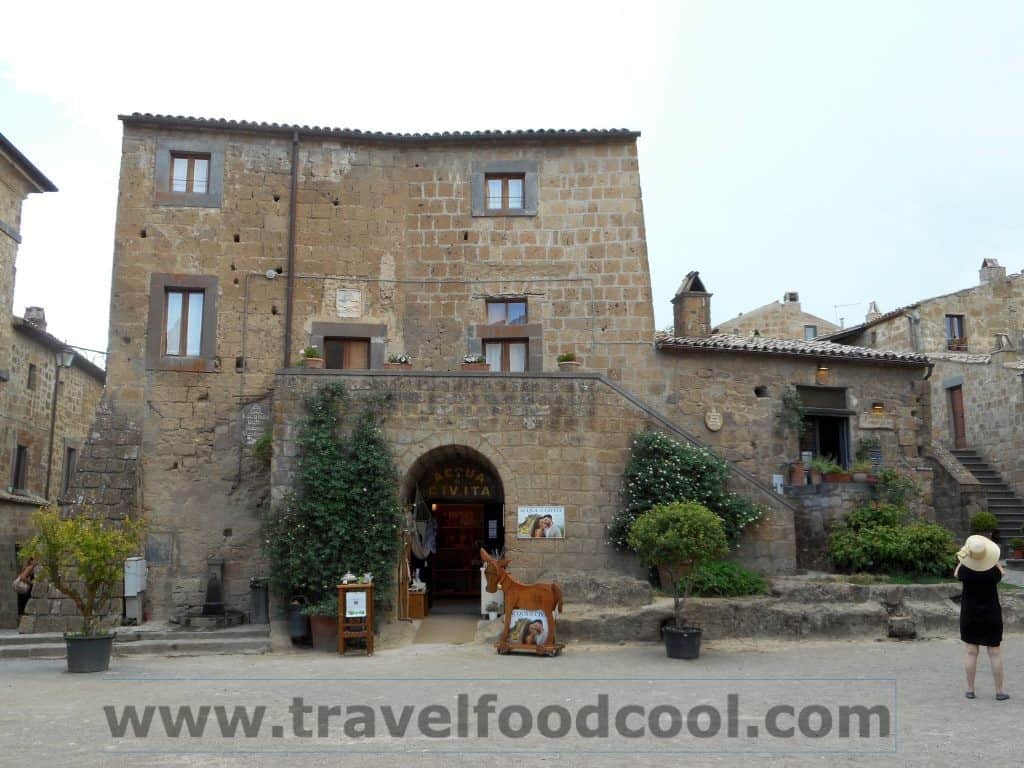
When you first see the town, it is almost unreal. The town looks like it in on an island standing on top of a mountain. To get to it, you have to cross a bridge. To say it is a bridge is an understatement as it is actually a 1 km long causeway. As this is the only way over, you must make the hike by foot to approach the town. Fitbit wearers will be happy as you will certainly get your steps in on this day!
The walk across the causeway is a big part of the experience. From the parking lot, you walk past a few small shops and a restaurant and then down a set of stairs to a roadway. The roadway leads down to a cluster of buildings where the causeway starts. The walk serves to build excitement. We were filled with wonder as the town on its hilltop island floated into view like a balloon tethered to earth by the bridge.
The walk across the causeway is very dramatic. The views are nothing short of spectacular and the wind whips your hair and clothing. We took photo after photo.
[ELIN’S TIP: Ladies – it is extremely windy on the bridge, wear pants or be prepared to hold your dress or skirt down all the way across to the town!]
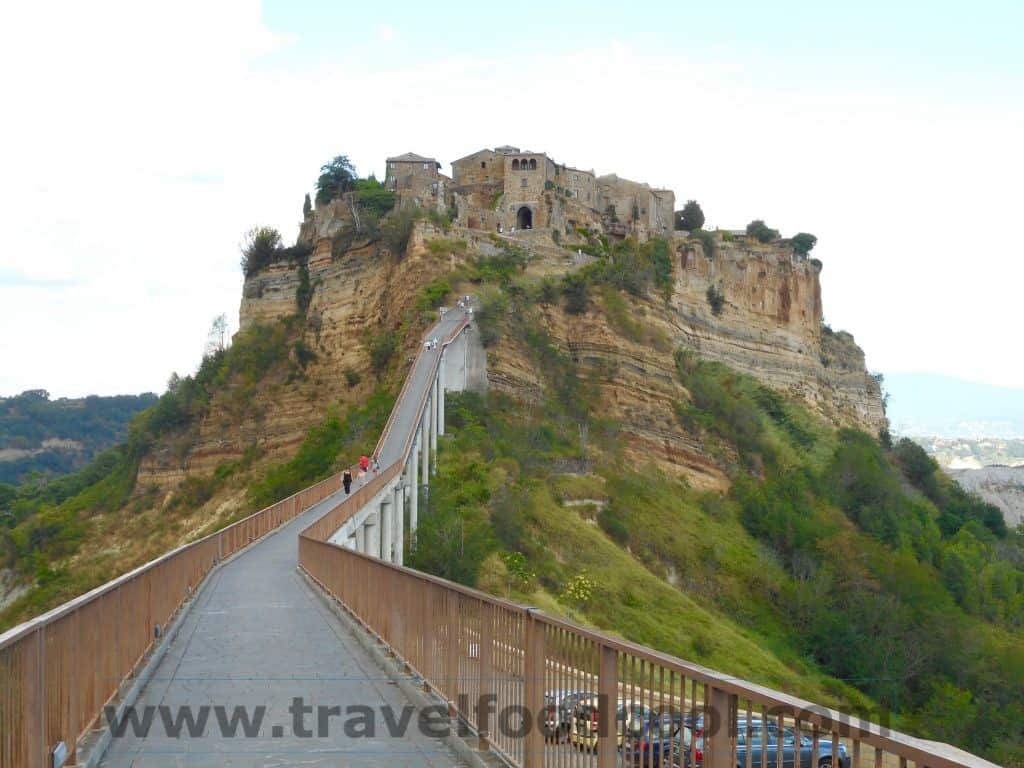
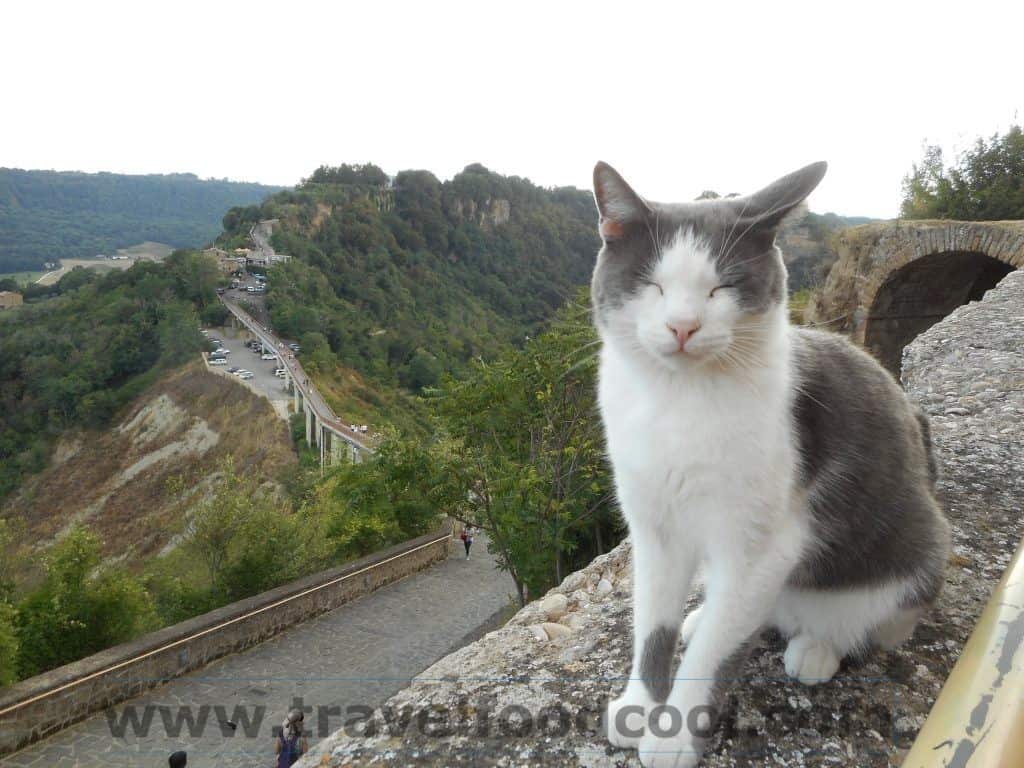
Please note that if you have difficulties walking, this is not the place for you. The bridge is foot traffic only and no cars are allowed (provisions are brought in by scooters). The only vehicle we saw in town was one lone Ape.
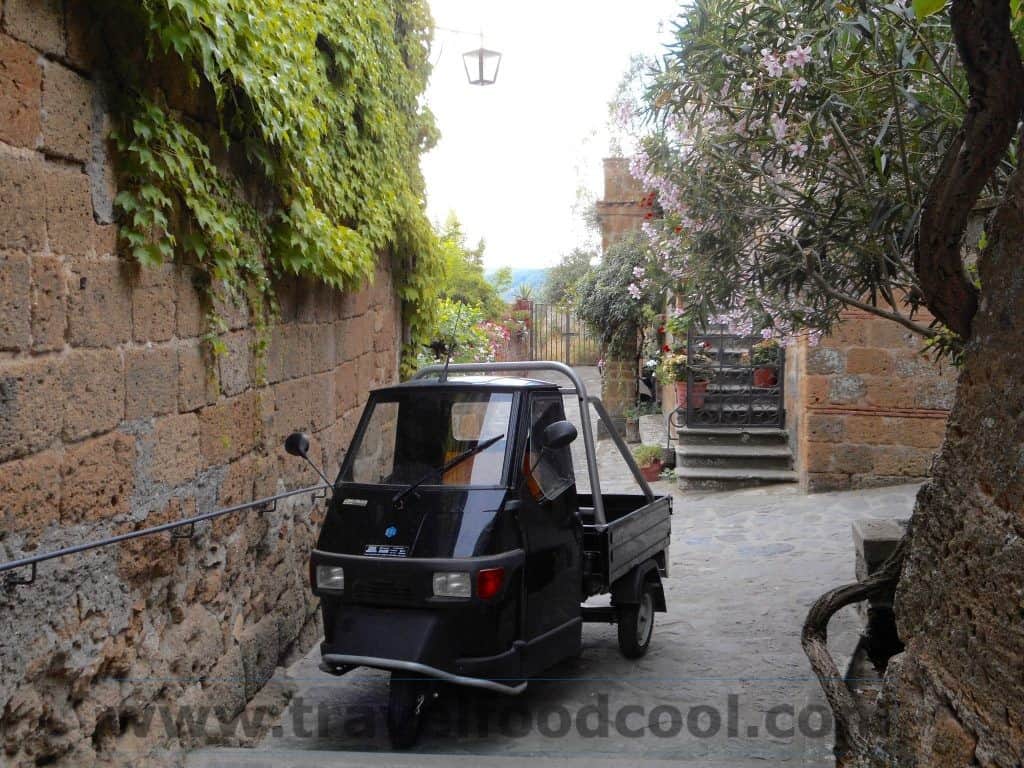
Once you walk over the bridge and into town, you quickly realize that the town has been around for a long time. It was founded by the Etruscans 2,500 years ago, around 500 BC, and was considered an importantly-situated city. Since the city was located in the middle of many major trade routes, it has historically always welcomed visitors.
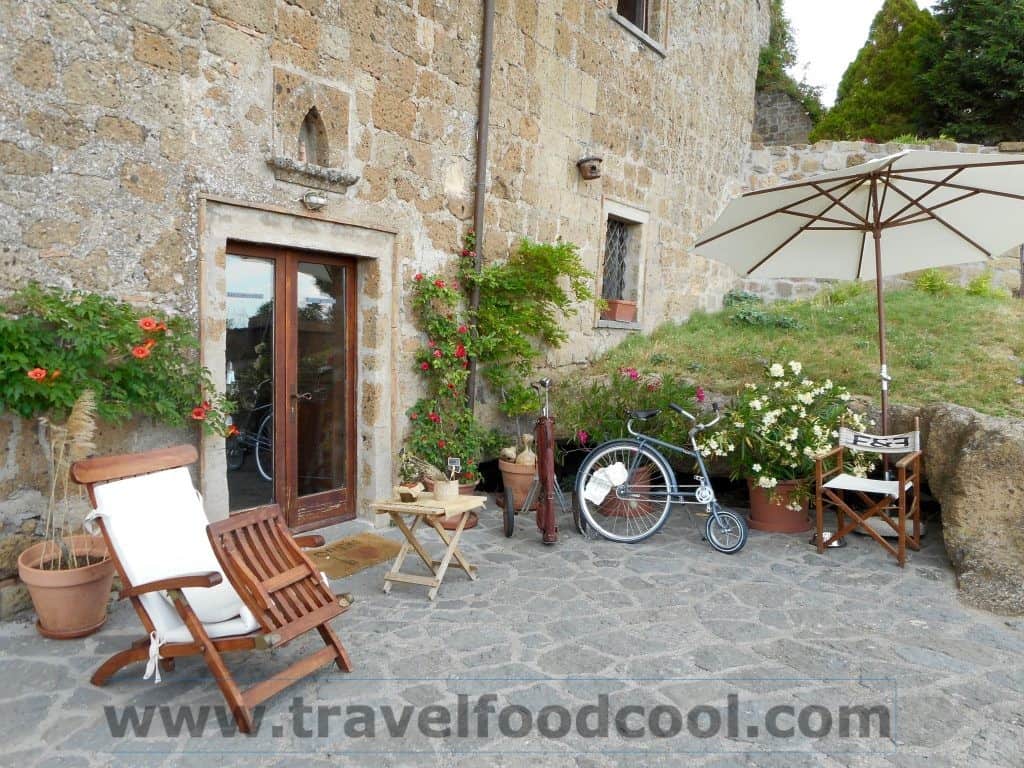
Saint Bonaventure (said to be miraculously cured by St. Francis of Assisi of a serious illness) was born in the town, although his original house has long since fallen off the cliff. The cave of Saint Bonaventure was said to be a chamber tomb, with a chapel built over top of it during the Middle Ages.
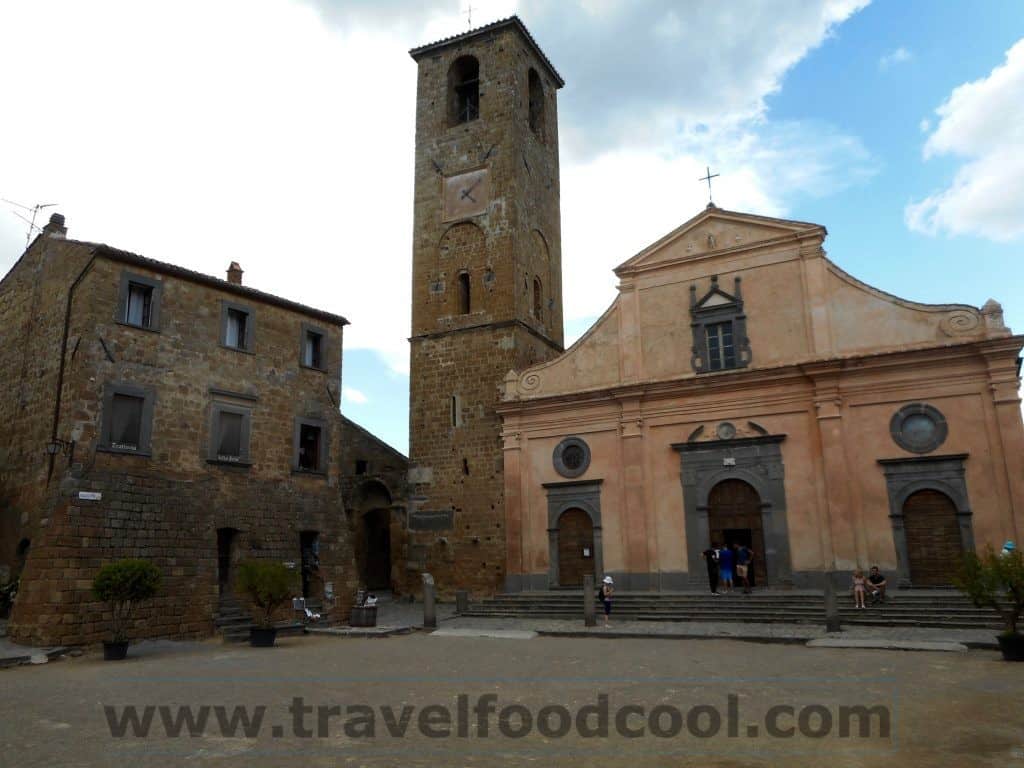
Speaking of being cured, the town was also known as Balneum Regis, or “baths of the king“. The Lombard king, Desiderius, gave the town this name, after his wounds were cured by the hot springs waters of the area.
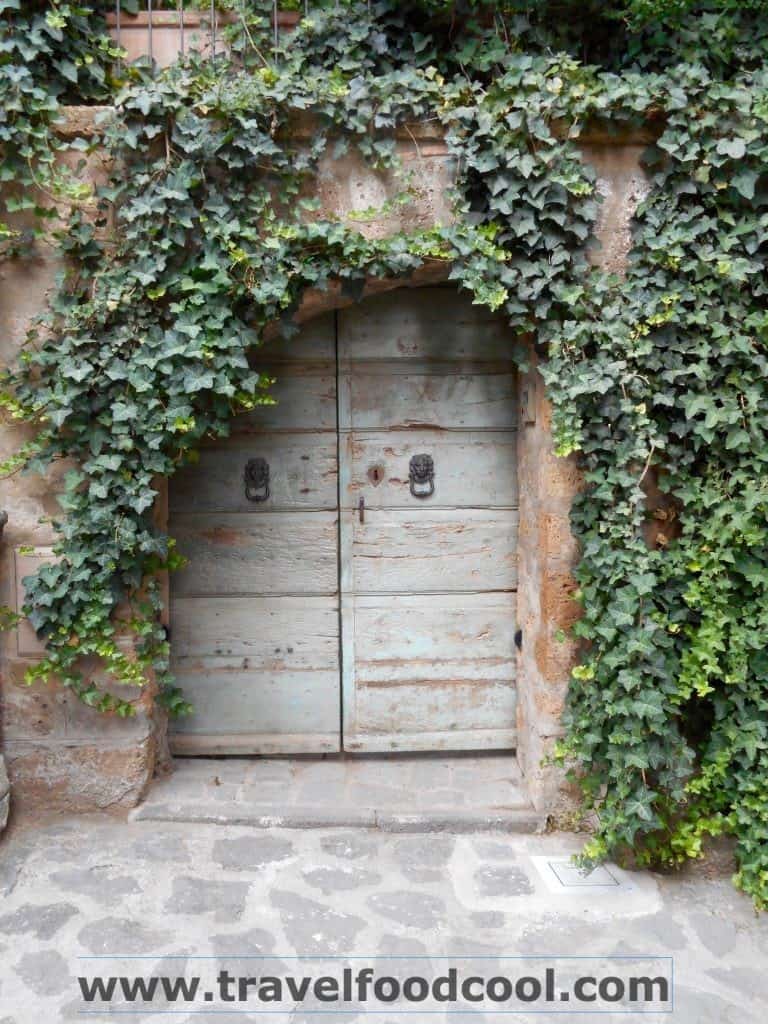
Italy has seen many earthquakes, like the one that recently hit Umbria, destroying more than 75% of the town of Amatrice in August 2016. Civita di Bagnoregio was also the victim of a major earthquake in the 17th century. This event caused the first great movement of the population from the hilltop town to the neighbouring city of Bagnoregio. Erosion, landslides, and more earthquakes took their toll on the town causing houses and streets to disappear and the town started to look like an island.
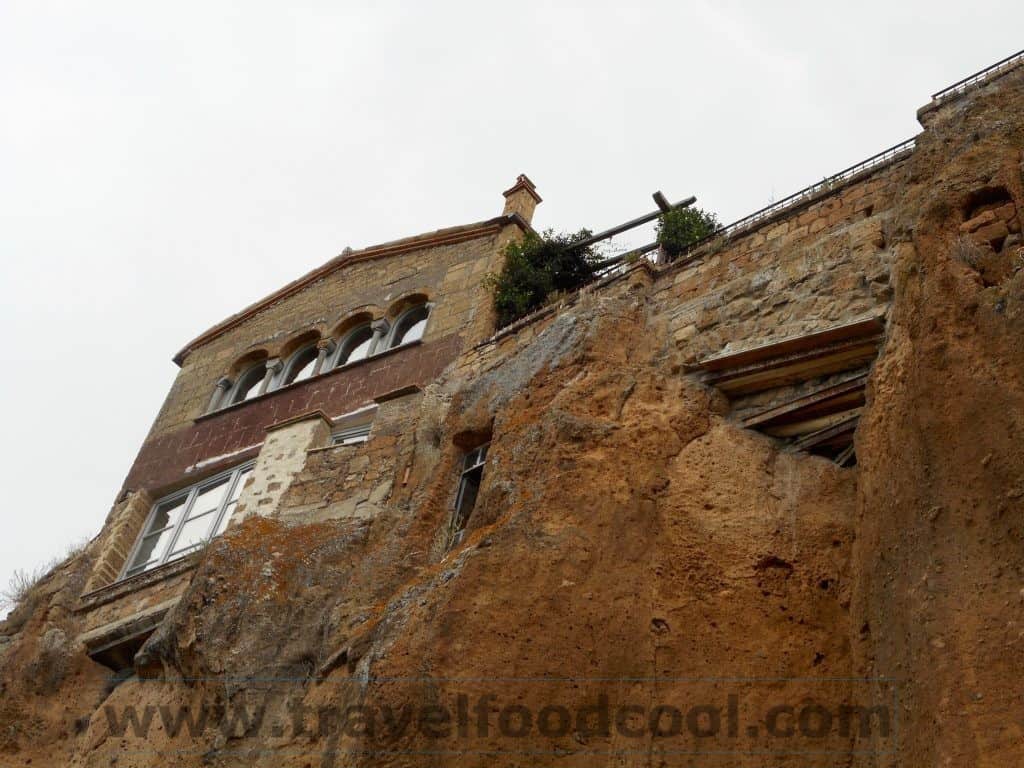
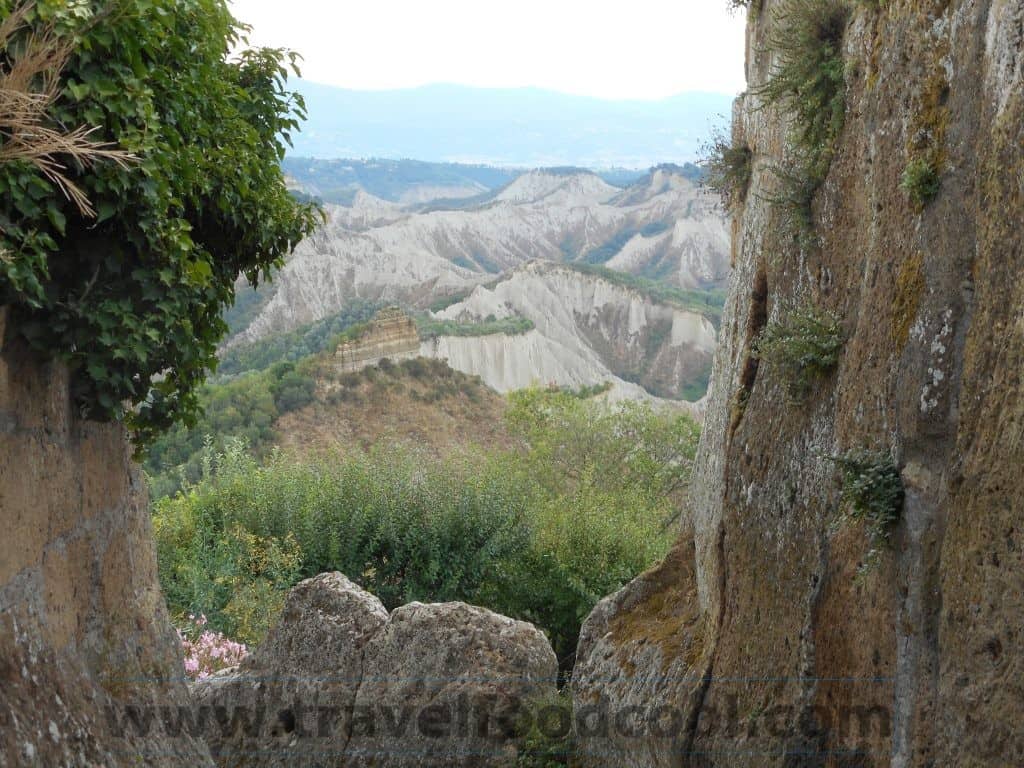
The monastery of St. Francis is one of the victims of all the damage. It was originally located between Civita di Bagnoregio and the town of Bagnoregio (probably at some point near where the bridge is located today). The town of Civita became known as “il paese che muore” (the town that is dying).
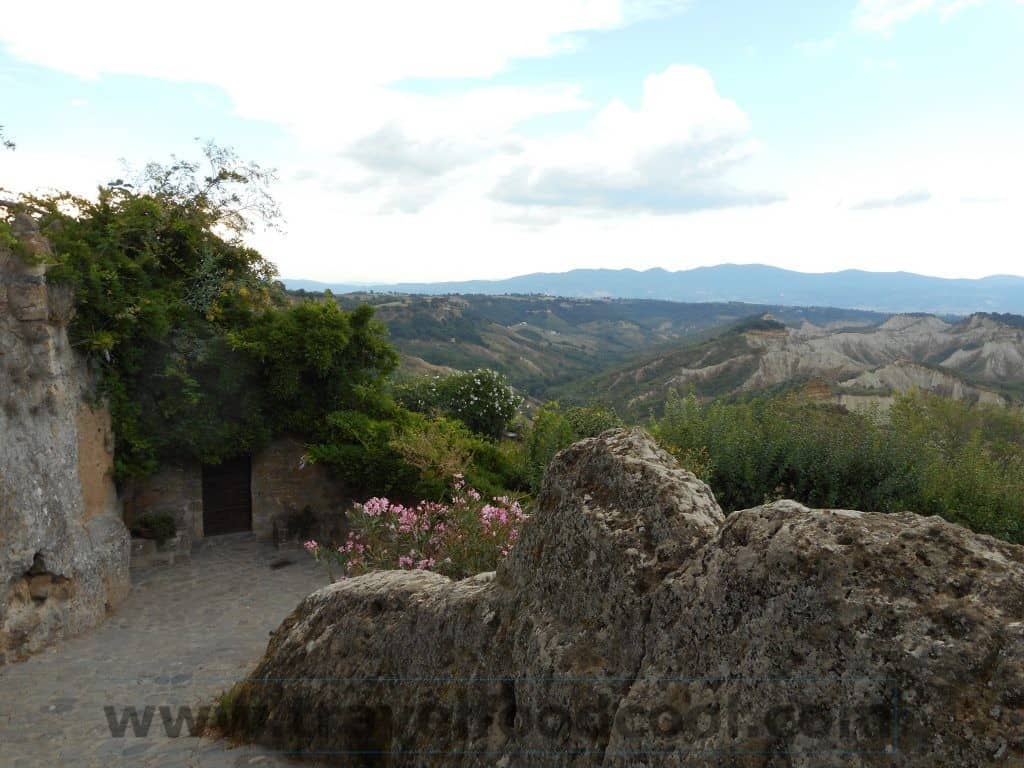
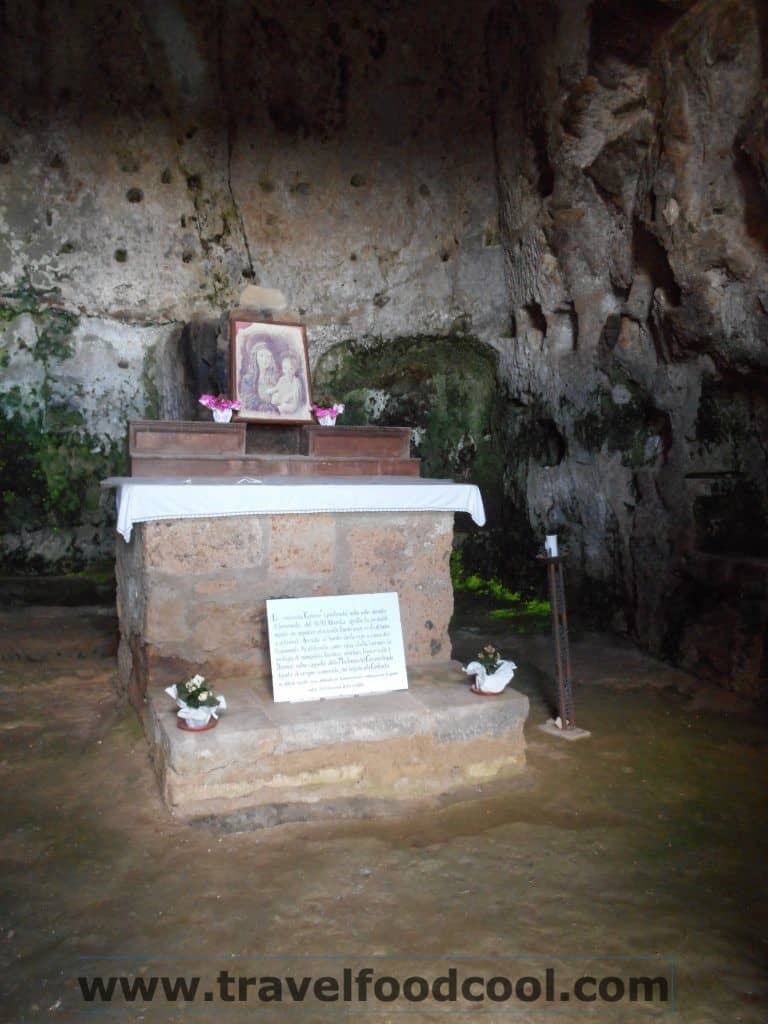
In about 2010, the town became a popular spot for tourists. To cross the bridge into town, a small “toll” fee of €1.50 is charged (quite a smart move, as the toll is low enough that people don’t balk at paying it). Tours and tastings are also available for a surcharge.
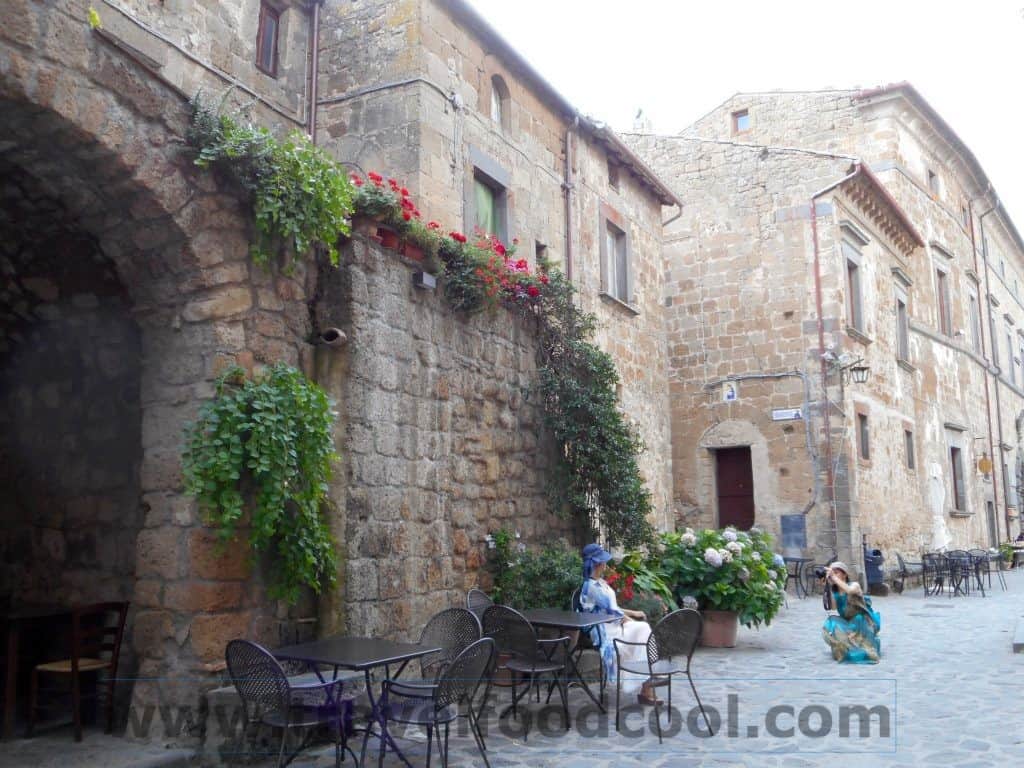
The full-time population of 12 swells 10-fold in the summer to around 124 people. There are many very cute shops, restaurants, and buildings. It is a great spot to spend a morning or day.
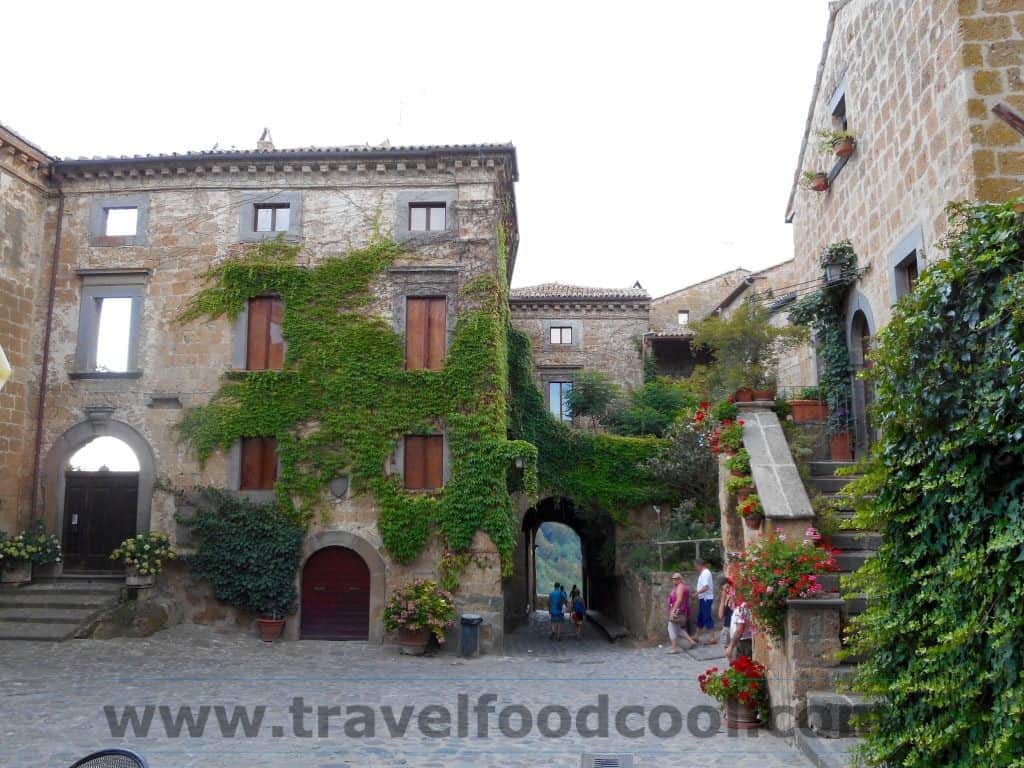
In the main square, there is a building that is only a facade due to years of damage (see photo above and below).
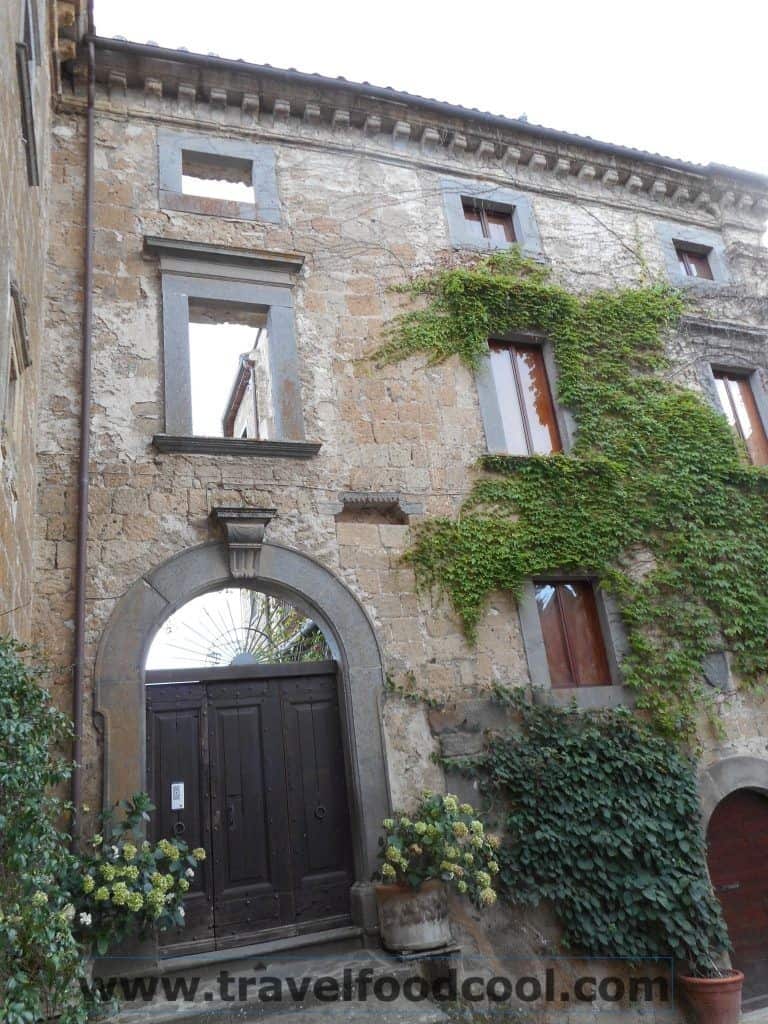
ELIN’s TIP: Do this as a double-header with Bomarzo, but go to Civita di Bagnoregio in the morning and stay there for lunch. There are lots of restaurants in the town.
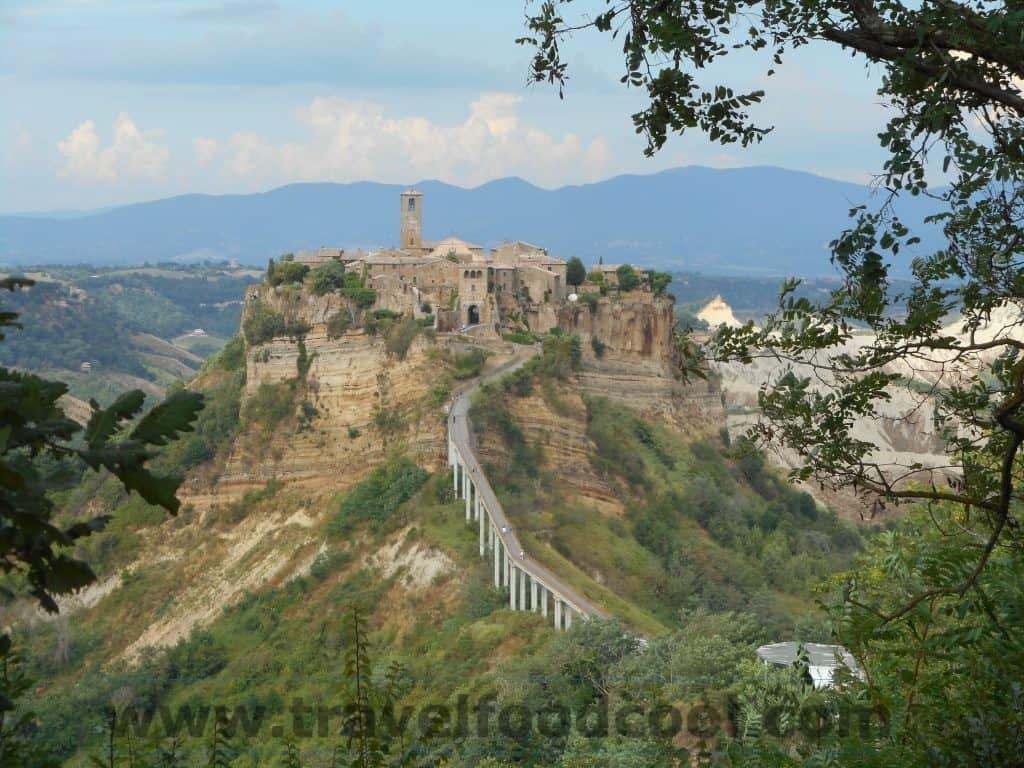
The city itself is on a list of 100 Most Endangered Sites and the locals are trying to preserve it. The town is on a mission to become a UNESCO World Heritage Site.
Where: Civita di Bagnoregio, Lazio, Italy When: Winter: March 1 – May 31 October 1 – January 6: Friday – Sunday: 10.00 – 13.00 14.00 – 18.30 Tuesday – Thursday: only with a booking for at least 25 people; Special Openings: December 26, January 6, Monday of Easter; Summer: June – September: Tuesday – Sunday: 9.30 – 13.00 14.00 – 18.30; Closed: Mondays, December 24, 25, 31, January 1 From January 7 to 28 (29) February.






















Elin, I always enjoy your posts. This one is fascinating and earn the town a spot on my must see list. Don
Thanks Don, kind of you to say! The town really is a cool spot to visit. You will love it!
Hi Elin, really enjoying the travel posts
Thanks Doris! Much appreciated! Working on a few new spots. Thanks for reading!